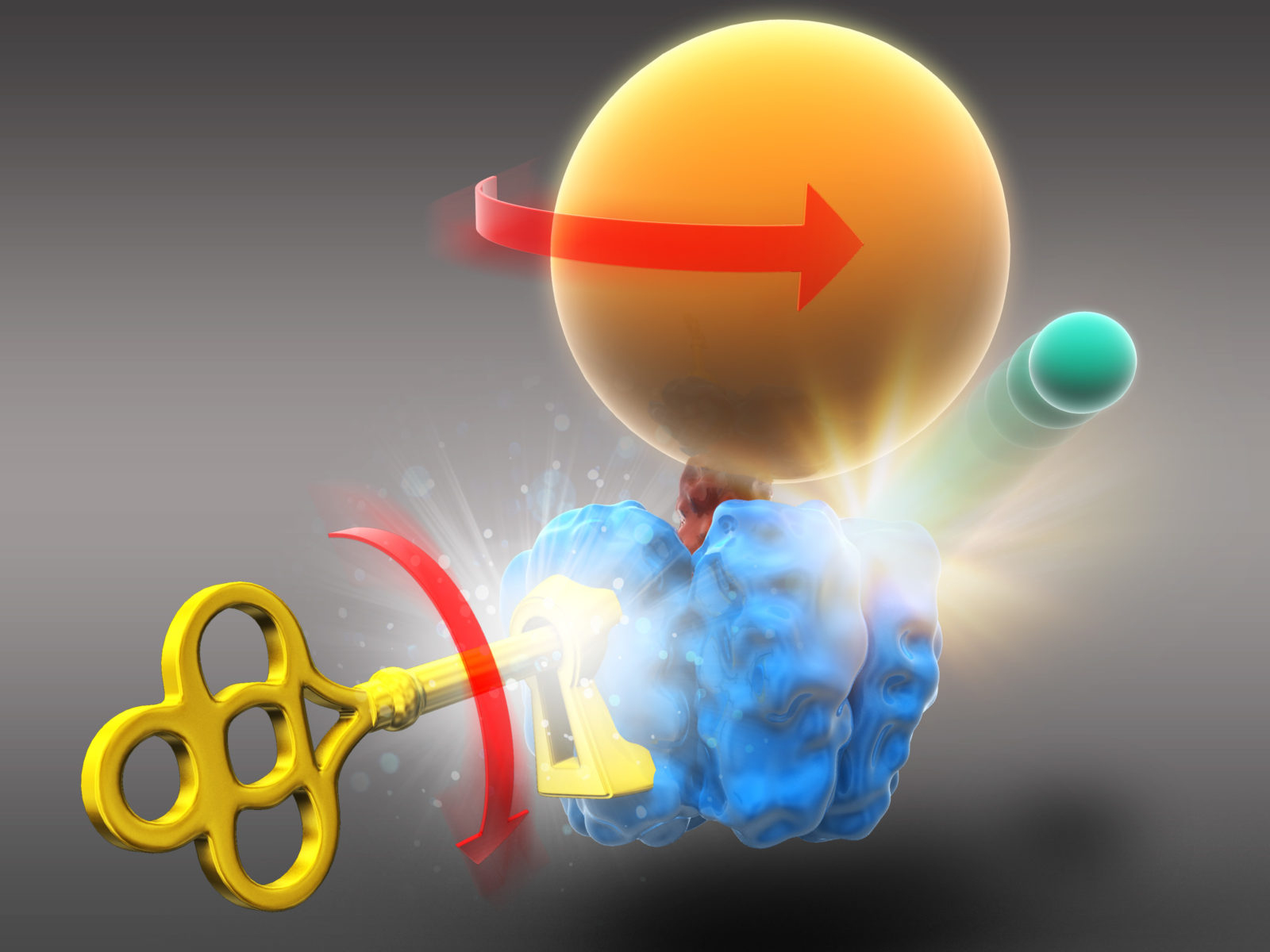Single Molecule Chemo-mechanics of the Rotary Motor Protein F1-ATPase: A Nano-scale Key-and-Unlock Mechanism
Research Press Release | January 07, 2016

| Press Release | ||
|---|---|---|
|
Outline |
Assoc. Prof. Chun-Biu Li and Prof. Tamiki Komatsuzaki in the Laboratory of Molecule & Life Nonlinear Sciences, along with Prof. Hiroyuki Noji and his staff in the Single Molecule Biophysics Laboratory of the University of Tokyo has successfully uncovered the functional role of the hydrolysis of adenosine triphosphate (ATP). We show that the fundamental reaction in the motor protein F1-ATPase acts as a “key” to “unlock” subsequent reactions in the catalytic cycle. Driven by ATP hydrolysis, F1-ATPase (F1) is a rotary motor protein that efficiently converts chemical energy into mechanical work of rotation via fine coordination of its conformational motions and reaction sequences. Extensive studies have been carried out to unveil the tight chemo-mechanical couplings between the rotation and the fundamental catalytic reactions, namely, ATP binding, adenosine diphosphate (ADP) release, bound ATP hydrolysis and inorganic phosphate (Pi)-release. Compared with reactant binding and product release, we found that the hydrolysis of bound ATP has a relatively insignificant contribution to torque generation and the overall chemical energy released. Therefore, it remains elusive what functional role the hydrolysis of bound ATP plays in the F1 catalytic cycle. In this work, we investigated the detailed kinetics of the catalytic dwells and scrutinized the possible roles of the ATP hydrolysis reaction in terms of contemporary time series analysis and single F1 rotary observations with microsecond time resolutions. In particular, model-free change points and clustering analyses were developed and applied to the stepwise F1 rotary traces in order to robustly construct the statistics of waiting time and angular fluctuations from the catalytic dwells. This allowed us to detect a small angular increment during the catalytic dwell triggered by the hydrolysis of bound ATP that was indiscernible in previous studies using conventional analysis methods. Moreover, we found in freely rotating F1 that the hydrolysis of bound ATP was followed by a Pi-release with low synthesis rates. In terms of free-energy reaction diagrams accounting for the chemo-mechanical couplings between the catalytic reactions and rotary fluctuations at the catalytic dwell, we uncovered the functional roles of the hydrolysis of bound ATP as a “key” to “kinetically unlock” subsequent Pi-release reactions and promote the correct reaction ordering despite its minor contributions to the torque and chemical energy generations. This result provides an important step toward understanding the working principles of F1 at the single molecule level. Furthermore, we expect that such key-and-unlock mechanisms could be a common strategy to achieve precise chemo-mechanical coordination in other motor proteins, such as V-ATPase, kinesin, myosin, dynein, etc., in highly fluctuating nano-environments. This research was conducted in collaboration with the research group of Prof. Hiroyuki Noji (Department of Applied Chemistry, Graduate School of Engineering, University of Tokyo) and was published in Nature Communications on Dec 17th 2015. |
|
| Inquiries |
Tamiki KOMATSUZAKI, Professor, Molecule & Life Nonlinear Sciences Laboratory, Research Center of Mathematics for Social Creativity, Research Institute for Electronic Science (RIES), Hokkaido University TEL:+81-11-706-9434 FAX:+81-11-706-9434 tamiki[at]es.hokudai.ac.jp |
|
|
Japanese/ English Links |
データからナノスケールで生じる高効率なエネルギー変換の仕組みを解明 (12.25.2015) |
|
| Publications | ATP Hydrolysis Assists Phosphate Release and Promotes Reaction Ordering in F1-ATPase, Nature Communications (12.17.2015) | |
